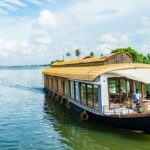Planning to explore the beautiful city of Jaipur? This Jaipur travel guide has got you covered! The capital city of Rajasthan, India, Jaipur is a lively blend of history, culture, and architectural beauty. Known as the ‘Pink City’ for its stunning terracotta-coloured buildings, Jaipur promises a unique experience for every traveller. From its majestic forts and palaces to busy bazaars and delectable cuisine, the city has something to offer for everyone. It doesn’t matter if you’re a historian, a food lover, or a shopaholic; this travel guide assures you have an unforgettable journey into the heart of India’s royal heritage.
Location
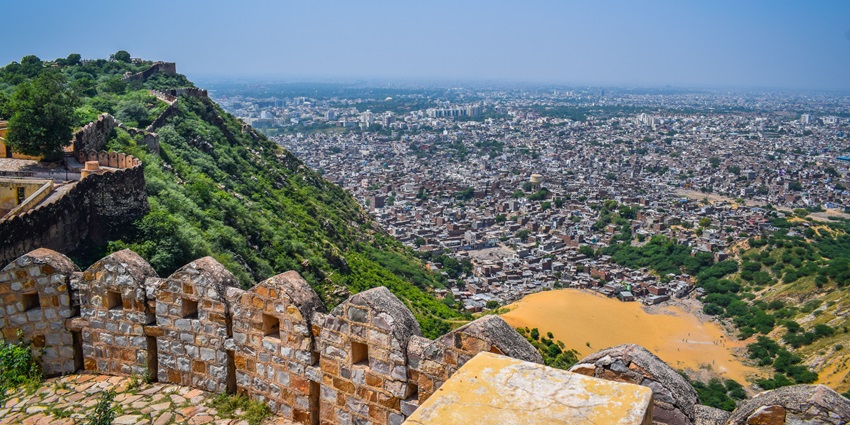
Photo: Chinmaykp25 / Wikimedia Commons
Jaipur is located in the northwestern part of India, in the state of Rajasthan. Situated in the semi-arid region of the Thar Desert, the city is about 268 kilometres southwest of Delhi and 240 kilometres northwest of Agra. Jaipur’s strategic position attracts travellers exploring northern India as part of the famous Golden Triangle tourist circuit. The Aravalli Hills surround the city, adding a scenic backdrop to the Jaipur tour.
Suggested Read: Places To Visit In Jaipur
How To Reach

Photo: bilaleldaou / Pixabay / Image For Representation Only
By Air: Jaipur International Airport, located in Sanganer, connects to major Indian cities such as Delhi, Mumbai, and Bangalore, as well as international destinations.
By Rail: Jaipur Junction is a major railway station, with trains such as the Shatabdi Express and Palace on Wheels connecting it to other parts of India.
By Road: The city is easily accessible via a network of national highways. Luxury buses and taxis operate regularly from Delhi, Agra, and other nearby cities.
Places To Visit On Your Jaipur Travel Guide
1. Amer Fort
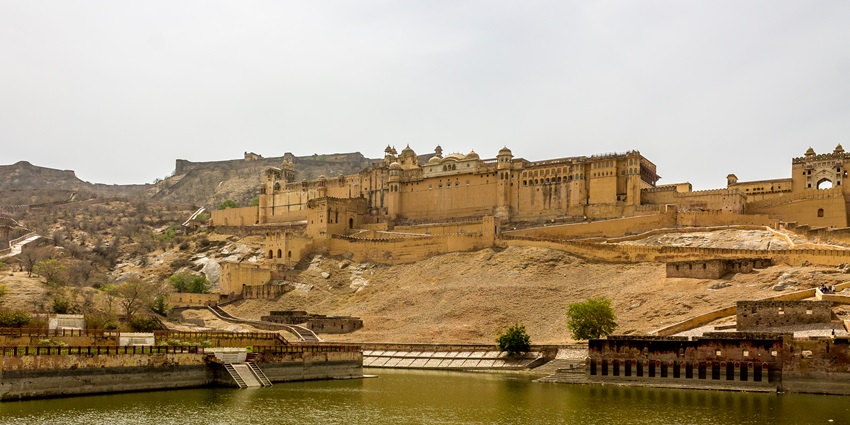
Photo: Aparna Mandal / Wikimedia Commons
This majestic fort is a UNESCO World Heritage Site. Known for its unique architecture, Amer Fort features stunning elements such as the Sheesh Mahal (Mirror Palace) and Diwan-e-Aam (Hall of Public Audience). The fort overlooks Maota Lake, offering breathtaking views. Visitors can enjoy an elephant ride to the entrance or opt for a jeep ride. Amer Fort’s light and sound show in the evening is a must-see for history buffs.
Entry Fee: ₹25 for Indians and ₹550 for foreign tourists
Timings: 8 AM – 5:30 PM (Light and Sound Show from 7:30 PM)
Suggested Read: Discover Places To Visit In Jaipur At Night For A Perfect Getaway
2. Ramgarh Lake
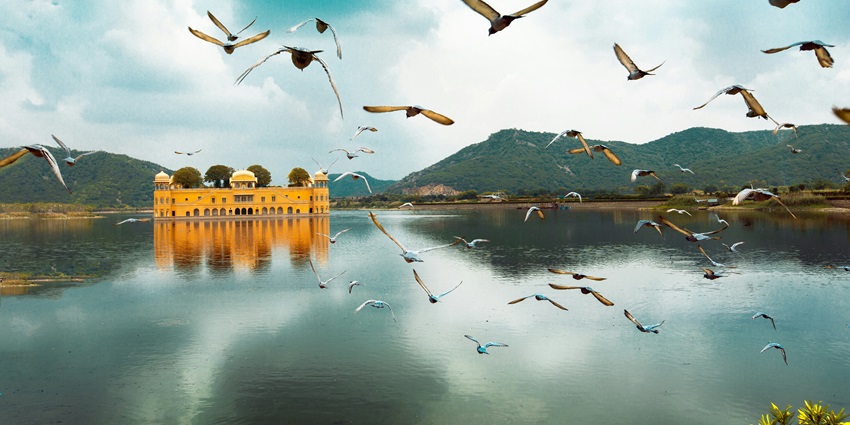
Photo: Aditya Siva / Unsplash / Image For Representation Only
Ramgarh Lake is a peaceful retreat for nature lovers. Once a sprawling artificial lake, it is now a beautiful spot for picnics and birdwatching. Surrounded by greenery and hills, the area is ideal for photography and relaxation. Adventurers can explore nearby trails. While the lake’s water levels have reduced over time, its soothing ambience continues to attract visitors looking for a peaceful escape.
Entry Fee: N/A
Timings: Sunrise to sunset
3. Gatore Ki Chhatriyan
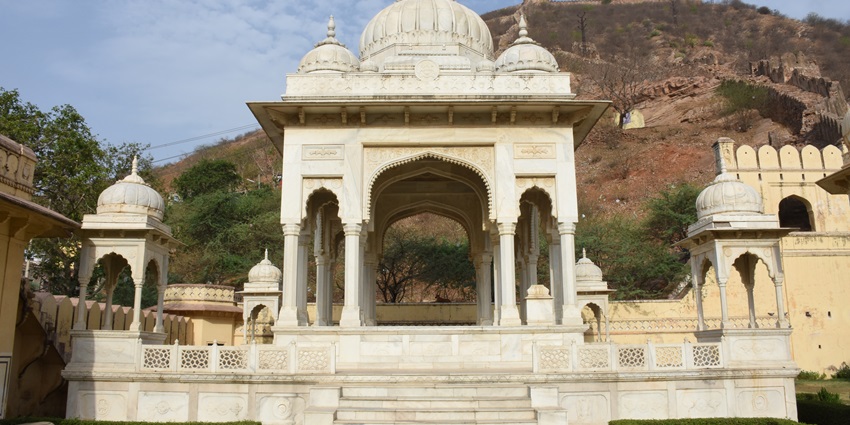
Photo: Niharika Sharma / Wikimedia Commons
Gatore Ki Chhatriyan is a royal cremation ground for the rulers of Jaipur. Beautifully carved marble and sandstone cenotaphs (chhatri) adorn this historical site. Each chhatri is unique, representing the reign of a specific ruler. The site’s environment and architectural details make it a great spot for photography and reflection. Situated amidst the Aravalli Hills, Gatore Ki Chhatriyan offers a peaceful retreat away from the city’s noise.
Entry Fee: Varies
Timings: Early morning or late afternoon
Suggested Read: Discover Places To Visit In Jaipur For Couples For A Romantic Getaway
4. Jaigarh Fort
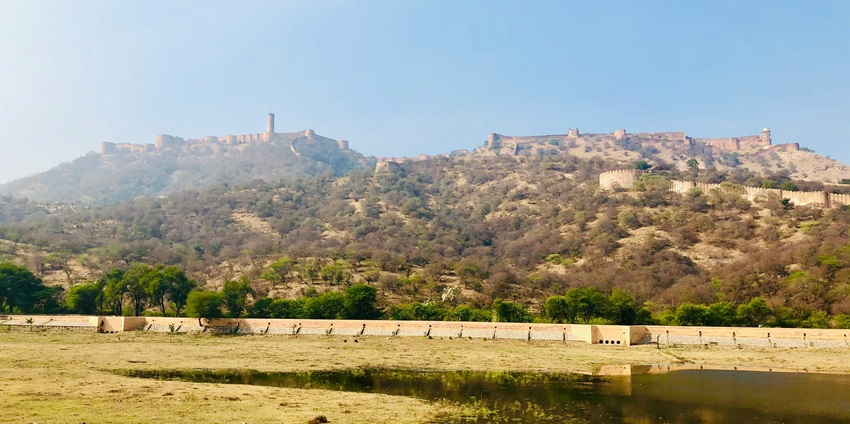
Located on the Aravalli Hills, Jaigarh Fort is popular as the ‘Fort of Victory,’ as it houses the world’s largest cannon on wheels, Jaivana. The fort’s robust architecture and underground tunnels are a living symbol of its military significance. Visitors can enjoy 360-degree views of Jaipur from its watchtower. The fort connects to Amer Fort via subterranean passages, adding an element of intrigue and mystery to its history.
Entry Fee: ₹150 for Indians and ₹200 for Foreign Tourists
Timings: 9 AM – 5:30 PM
5. Bagru Village

Photo: Héctor J. Rivas / Unsplash / Image For Representation Only
Bagru Village is a destination for traditional artisans specialising in block printing. Known for its special Bagru prints, the village offers a chance to witness centuries-old textile techniques. Visitors can explore workshops, interact with local artisans, and even try their hand at printing. Bagru is ideal for those looking for a cultural experience and a deeper understanding of Rajasthan’s handicrafts. Don’t forget to shop for authentic printed fabrics as souvenirs.
Entry Fee: N/A
Timings: Sunrise to sunset
Suggested Read: Places To Visit In Jaipur For Shopping
Where To Stay
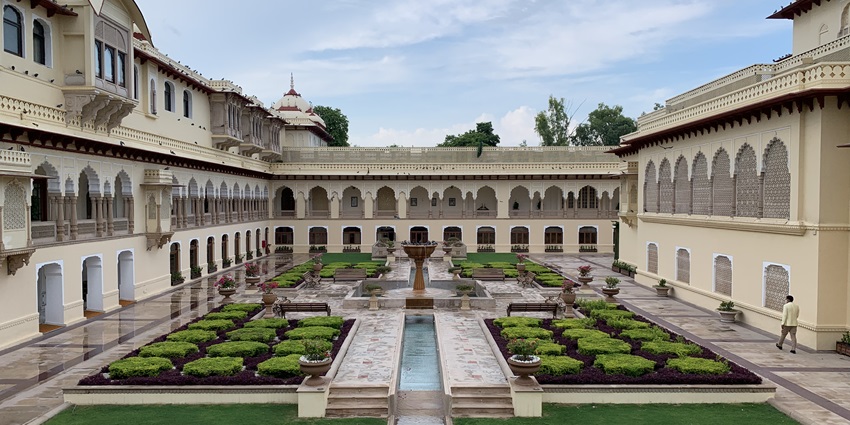
Photo: Chainwit. / Wikimedia Commons
Jaipur has a wide range of accommodations to suit all budgets and preferences. Luxury seekers can opt for heritage hotels such as Rambagh Palace or Samode Haveli, where royalty meets modern amenities. Mid-range travellers can choose boutique hotels such as Shahpura House or Arya Niwas, known for their warm hospitality. Budget travellers can find cosy guesthouses and hostels such as Zostel Jaipur. Many accommodations are located close to major attractions, ensuring a comfortable and convenient stay.
Where To Eat
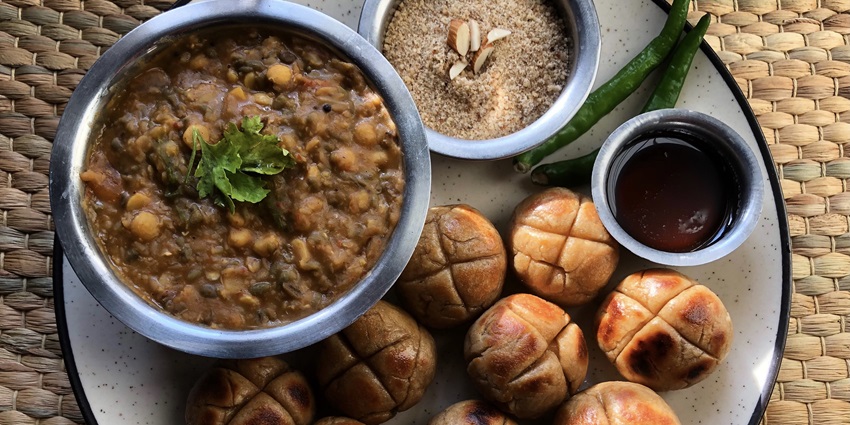
Photo: Mahi Tatavarty / Wikimedia Commons / Image For Representation Only
Jaipur is a food lover’s paradise, offering a mix of traditional Rajasthani and contemporary cuisine. For authentic flavours, visit local favourites such as Laxmi Mishthan Bhandar (LMB) for Dal Baati Churma and Ghevar. Chokhi Dhani provides a memorable dining experience with Rajasthani cultural performances. Modern eateries such as Bar Palladio and Tapri Central offer a mix of global and Indian dishes in stylish settings. Street food lovers can savour kachoris at Rawat Mishthan Bhandar and golgappas at Johari Bazaar.
Suggested Read: Places To Visit In Jodhpur For An Amazing Vacation Experience
Best Time To Visit
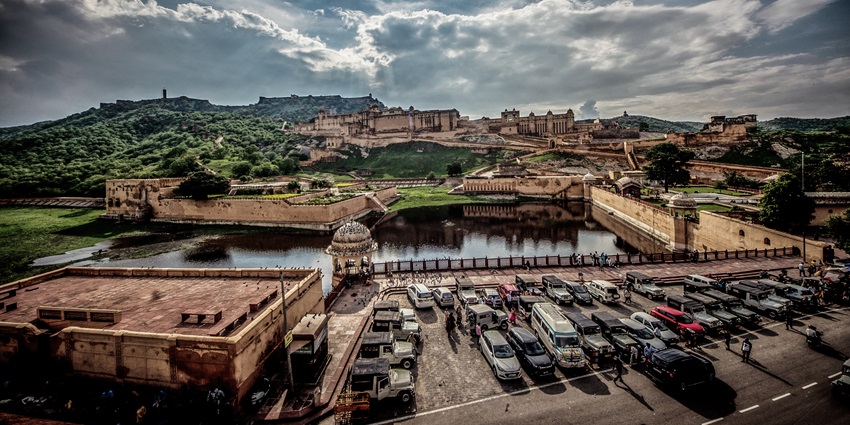
Photo: CC0 Public Domain / pxhere / Image For Representation Only
The best time to visit Jaipur is during the winter months, from October to March. During this period, the weather is pleasant, with daytime temperatures ranging between 18°C and 25°C (64°F and 77°F), making it ideal for Jaipur tourist guides to plan for sightseeing and outdoor activities. Summers (April to June) can be scorching, with temperatures soaring above 40°C (104°F), while the monsoon season (July to September) brings moderate rainfall, adding a refreshing vibe to the city’s atmosphere.
Other Factors To Consider
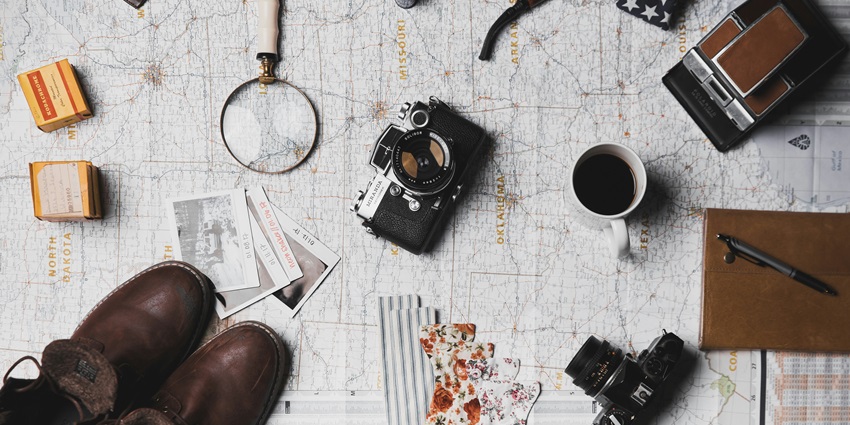
Photo: ian dooley / Unsplash / Image For Representation Only
Tips For Travellers
- Local Transport: Auto-rickshaws, taxis, and app-based cabs such as Uber and Ola are readily available. Renting a bicycle or scooter is another great way to explore the city.
- Dress Code: Please wear modest clothing, especially when visiting religious sites.
- Shopping: Don’t miss the bazaars like Johari Bazaar for jewellery, Bapu Bazaar for textiles, and Chandpole Bazaar for handicrafts.
- Cultural Etiquette: Respect local customs and traditions, especially during festivals and ceremonies.
Suggested Read: Best Places To Visit In Udaipur
Jaipur is a city that captivates travellers with its royal heritage, architectural wonders, and lively culture. From exploring ancient forts to savouring mouthwatering delicacies, the Pink City offers a memorable experience for every visitor. Whether you’re planning a short getaway or an extended trip, Jaipur has something for everyone. Plan a trip with TripXL with a Jaipur travel guide for a seamless and memorable journey.
Cover Photo: Roberto Reposo / Unsplash


 WhatsApp
WhatsApp
 Twitter
Twitter



